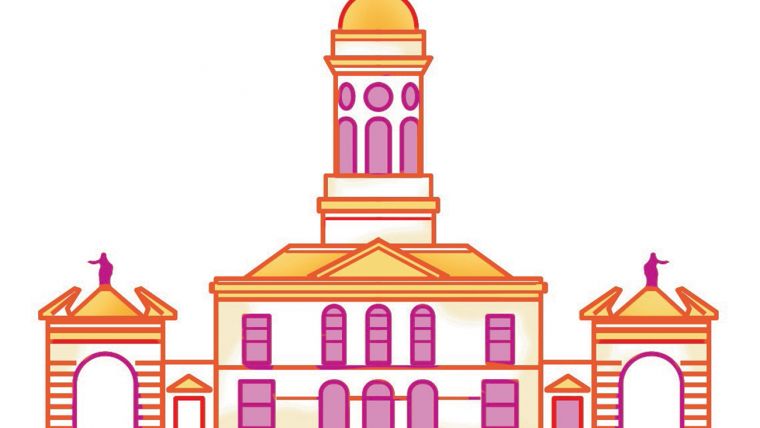Modern Insights and Techniques - EFGS Ireland 2017
On 2 November 2017, GIS Professional's Niall Conway attended the opening day of the annual EFGS conference in Dublin, Ireland. Although he only managed to attend half of the two-day event (the national Earth Observation Symposium was held on the same dates), it was enough time to appreciate the fact that decision-making and governance are on the cusp of major change.
First up, my first memorable memory from the EFGS conference which geospatialists may appreciate occurred after I had arrived at the conference. While checking in at the centre’s cloakroom I glimpsed a gentleman who appeared, like many others, to be in unfamiliar surroundings. ‘Surely not..’, I thought before looking over my shoulder to see Jack Dangermond, Esri President and co-founder, eventually set off in a direction to give his keynote speech. Perhaps the next best thing to being starstruck is realising that those stars, including giants of the location industry, can sometimes seem a bit lost also.
So, a not long after Hurricane Ophelia made it’s arrival to Irish shores, Dublin, this time, gladly welcomed a range of experts from national mapping and statistical bodies who were focused on the more constructive task of integrating data across public sector bodies and institutions. In case you are, by the way, still uncertain as to the purpose of EFGS, then just remember that statistics and geography both focus on using quantitative and qualitative techniques and tools to derive insights from the world. Although they are now considered as distinct subjects, due to a certain degree of institutionalisation over the years, it is clear that global challenges are now necessitating more collaboration and integration between them.
Spreadsheets and maps have, however, not existed in isolation before now - they are simply different mediums for telling a story which have been fused together through technology. As an example, just remember that Jack Dangermond’s very own shapefile format contains a statistical component, the .dbf, which holds attributes on the features represented on a map. Furthermore, this file can be opened in either GIS or spreadsheet software, can be saved in common RDBMSs and can be aggregated, updated and analysed using SQL language. It is little coincidence therefore that, in the face of today’s data deluge, both the distinction between statistics and geography and the various commercial and opensource tools developed by members of the respective communities have started to blur.
Getting back to business, the EFGS conference was organised under three main themes which are relevant to the integration of statistical and geospatial information by governments. The first theme was the UN’s Agenda to advance the use of geospatial information by governments and to ensure that decisions on the infrastructure and systems which they manage are based on accurate data. A key requirement in this regard, which was emphasised by another keynote speaker, Greg Scott of the UN-GGIM, was the development of a global framework of accountability and transparency based on Sustainable Development Goals (SDGs) and national spatial data infrastructure (SDIs). The second theme focused on enabling collaboration between often distinct parties. For this purpose, the UK’s Office of National Statistics Silicon Valley-esque Data ‘Campus’ and Finland’s Spatial Statistics on Web 2 project were discussed as examples of effective transitional action by governments. The third and final theme of EFGS17 focused on best practice by the government. This included presentations on a range of case studies from around the world on topics such as linked data, metadata harmonisation, census strategies, machine learning for satellite imagery analysis in Switzerland, Manchester’s smart city project, and settlement mapping in the Netherlands. Even the seemingly unrelated topics of underground utilities and driverless cars were discussed as relevant topics by another keynote speaker, Tim Trainor of the U.S. Census Bureau.
Although EFGS took place in the old surrounding of Dublin Castle, this conference was represented by cutting-edge thinkers. The agenda was focused on helping governments to better understand the fast-changing world of 2017. It was about helping to bring together statistical and mapping systems and about changing ways of thinking. It was also about helping governments to, through facilitating better understanding and enablement, steady ships which have, over recent years, been rocked by an unpredictable social, economic and political forces. During the conference, I also got a sense that governments are motivated to keep pace with private sector innovation and to explore new opportunities. As one attendee from a national statistical body mentioned to me during a coffee break: “We have, over the years, released a lot of open data into the public domain which companies have benefitted from greatly. Now it’s the government’s time to benefit.”
During his engaging keynote speech, Mr Dangermond gave me something else to remember. By inviting all attendees to stand up and speak with the person next to them, he was emphasising the fact that a conference such as EFGS is about much more than the broadcasting of knowledge. Rather it is an opportunity for attendees to form genuine human connections and to achieve a culture which is based on ‘human-interoperability’. Based on this thinking, the process of integrating the worlds of statistics and geography will not necessarily start with a top-level policy or a piece of technology. Rather, it will begin with a simple handshake.
This article was published in GIS Professional December 2017

Value staying current with geomatics?
Stay on the map with our expertly curated newsletters.
We provide educational insights, industry updates, and inspiring stories to help you learn, grow, and reach your full potential in your field. Don't miss out - subscribe today and ensure you're always informed, educated, and inspired.
Choose your newsletter(s)
























